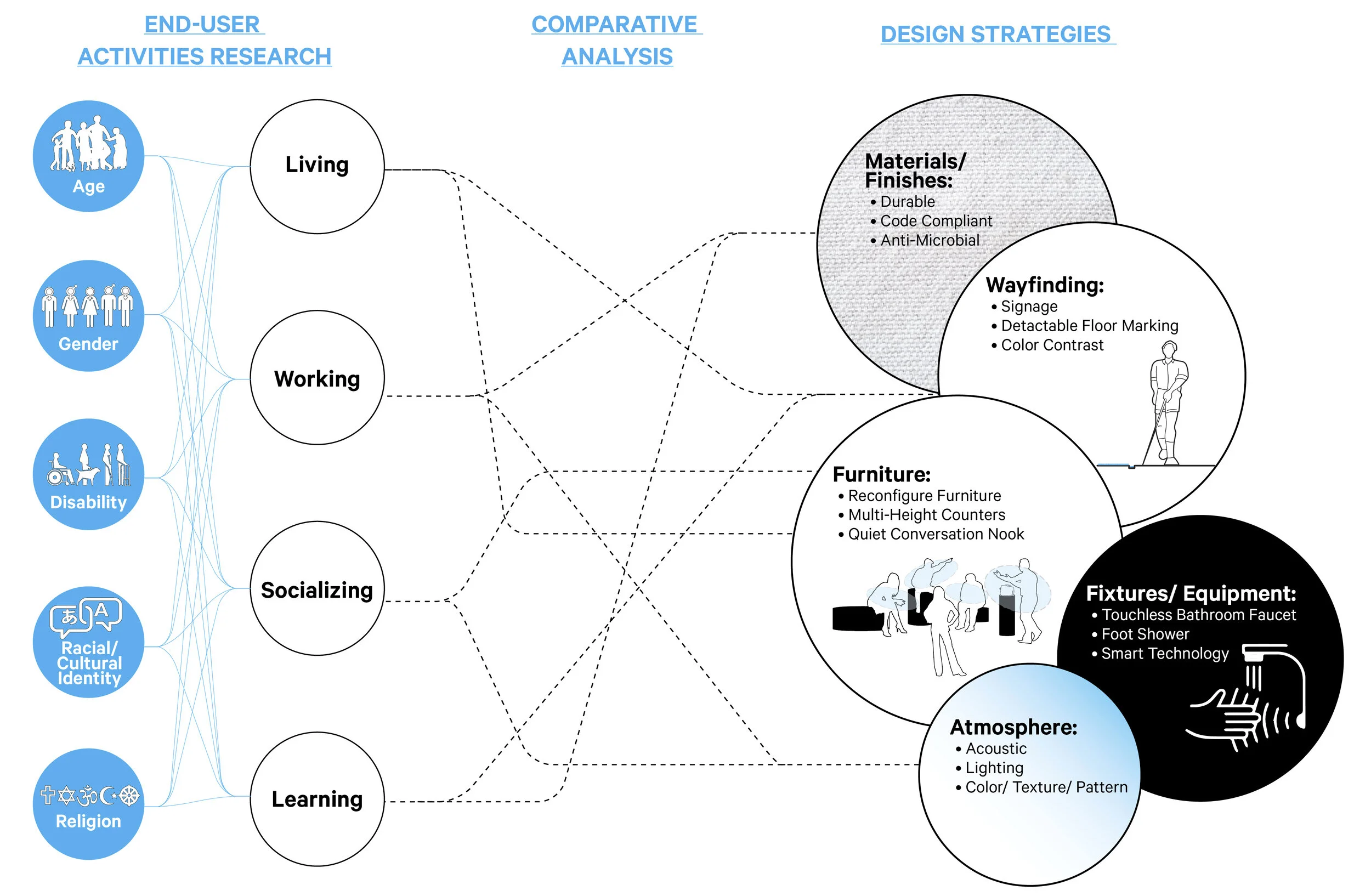1.0: Research and Analysis
MIX conducts literature reviews and participatory engagement practices (surveys, workshops, focus groups, on-site observation) to analyze the correlation between end users, activities and space. We investigate how end users perform different activities within the spaces the project program is designed to accommodate, taking into consideration health, comfort and well-being.
2.0: Synthesis
MIX uses this feedback to conduct a comparative analysis of overlapping end-user needs associated with each activity space which we then analyze to generate a matrix of shared design strategies that guide material and finish choices, wayfinding, lighting and the specification of furniture and fixtures. Our goal is to enable the maximum number of differently embodied and identified people to interact in different settings while also providing options for people with unique functional or privacy needs.
Integrated Design Process: Sustainability, Performance and Cost
MIX employs an integrated approach that considers the interrelationship between inclusive design and practical issues like durability, building performance and cost. We recommend economical, durable, and easy-to-clean furniture, fabrics and finishes. Throughout the process, we coordinate with technical consultants to meet building system performance measures for air quality, acoustics and lighting to optimize lifestyle costs with human comfort for a wide variety of users. Our process aligns with and reinforces the IDP (Integrated Design Process) being adopted by leading institutions to meet sustainability goals.





